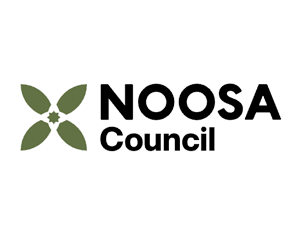Our journey
What council has achieved in the past in energy efficiency, renewable energy or broader sustainability
Noosa Council has enjoyed a long and proud history of environmental protection. For over half a century, local community members have fought to protect the natural environment and to place sustainable limits on human development. Thanks to decades of environmental activism, more than a quarter of the entire local government area is currently National Park and half of the total land mass contains remnant vegetation. For many years, Noosa Council has maintained a robust sustainability agenda in partnership with local community groups.
In October 2016, Council adopted its Zero Emissions Noosa (ZEN) Strategy which sets the ambitious target of achieving net zero emissions for the organisation by 2026. Since then we have conducted energy audits of our buildings, facilities and operations. We are currently developing action plans for energy efficiency as well as increasing our on-site renewable energy generation.
What council hopes to achieve in the future in energy efficiency, renewable energy or broader sustainability
Noosa Council has set a goal to reduce its net emissions to zero by 2026. To do this we will continue to identify technical and behavioural change initiatives throughout the organisation. This will impact on every level of Council operations, from town planning to procurement and project management to customer service. We want to make zero emissions the way we do business. Council continues to work closely with a broad range of community groups, business representative associations, universities and our tourism body to support their own sustainability actions. The Zero Emissions Noosa community group has also set 2026 as a public target. The Noosa local government area is a Biosphere Reserve under UNESCO’s Man and the Biosphere Program, with management and actions controlled by a community organisation and a foundation/trust. This provides further impetus for continued environmental and sustainability focus.
Landfill is by far our major source of emissions. We are currently flaring the gas from our landfill to reduce its greenhouse impact, and we have increased our gas capture rate through improving capping and increasing the number of bores. We hope to generate electricity using the captured gas in the very near future. Council is also focused on reducing emissions by preventing organic material ending up in landfill. To this end, we have introduced a garden waste recycling bin as a standard service to properties across the shire’s urban areas. Previously an opt-in service, it will be rolled out to 10,000 new customers in 2017.
As a council that values innovation Noosa Council has partnered with a contractor to trial a range of new road surfacing products made from recycled printer cartridges, old car tyres, and crushed glass in combination with bitumen. As well as reducing the amount of waste bound for landfill, the new asphalt is mixed at lower temperatures, meaning lower carbon emissions.
Our local government area has been designated a Biosphere Reserve under UNESCO’s Man and the Biosphere Program. Activities aimed at meeting the aims of the Biosphere Reserve are undertaken by a community association and a foundation, with support from Noosa Council.
Why council joined the Cities Power Partnership
Noosa Council has joined the Cities Power Partnership to learn, to share and to showcase. We look forward to teaming with a cohort of forward-thinking local councils that are taking real action to address climate change. A concerted effort at the local government level will contribute significantly to achieving Australia’s commitments to the Paris Agreement, meanwhile ignoring the sorts of impediments that can occur at higher levels of government. We commend the Climate Council of Australia for this important initiative.
